If you’re interested in the Stillaguamish River, there’s a good chance it’s not because you are planning to fish it this year, but instead are wondering what the heck is going on with this oft referenced river as the reason why you can’t fish wherever you prefer in Puget Sound.
The “Stilly” as it’s commonly referenced is a stunningly beautiful river draining the mountainous region just west of the North Cascades and flowing freely until it reaches Port Susan.
For many who’ve never fished the Stillaguamish River and have no plans to ever do so, the river is quite well known for its faltering run of chinook salmon that has become the “constrained stock” of the decade for limiting chinook fishing all over the Salish sea.
We will explore the conservation topic on this page and how that run of chinook salmon is recovering, but also there is a viable coho season on the river that some take part in, and just like all our river salmon pages, you can find the forecasts, escapement graphs and run timing below.
Will that Stillaguamish Chinook run ever recover and stop being a “constrained stock”?
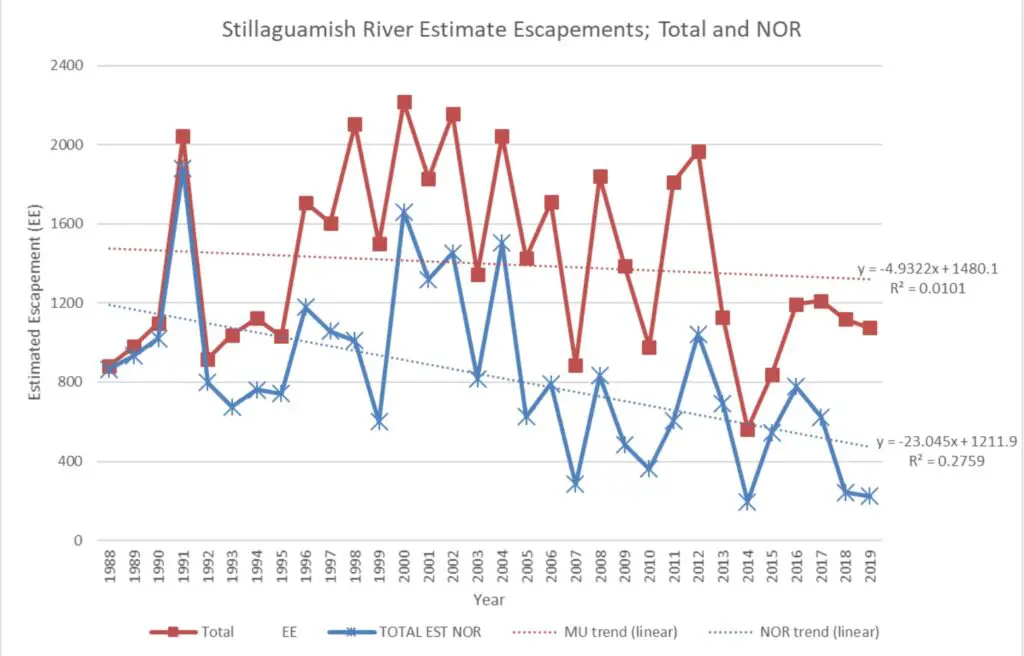
The above is what we would call a long-term sustained downward trend. Not good, in terms of the trajectory of recovery for Stilly chinook salmon.
The primary culprit? Loss of spawning habitat. Yeah, you could blame predation or ocean conditions or a myriad of other factors that impact chinook, but the fact remains, of all the Puget Sound chinook salmon runs, this is the weakest stock due to habitat unsuitability for spawning chinook (plus all the other reasons mentioned).
Well, shouldn’t we provide a conservation hatchery to help the recovery along? Already being done, and for quite some time actually. In fact, these “hatchery chinook” are fin-clipped, meaning they get bonked when caught throughout our fisheries.
Why would we fin clip a conservation hatchery stock? Apparently. in accordance with the Pacific Salmon Treaty with Canada, the only way we can get them to scan for the Coded Wire Tags (CWTs), is if we fin clip these fish. Fin clipped Stillaguamish chinook, genetically indistinguishable from the Natural Origin chinook (NOR) are an important indicator stock, so this is currently required.
The fin-clipped requirement of these hatchery salmon impacts seasons throughout Puget Sound as these Stillaguamish chinook are historically averaging half of the run of chinook that make it to the spawning grounds on the Stilly.
Fewer mortalities of hatchery origin Stillaguamish Chinook means more fishing opportunities in Puget Sound…
But wait there’s more!

Of the fisheries related mortalities (marine mammal predation is 7x the mortality of all fisheries combined according to NOAA), the overwhelming majority occur within BC. Although, some would say AK is much higher, but they allegedly ignore our reporting protocols on CWT’s.
And some of you complain that the tribe is taking more than their fair share…
The SUS Sport category translates to Southern US Sport Fisheries i.e. marine sport fishing catch of hatchery Stillaguamish River chinook and release mortalities on unmarked NOR chinook.
However, again, even with all of these factors included, other rivers within Puget Sound don’t have nearly the issues the Stillaguamish does with regards to spawning success.
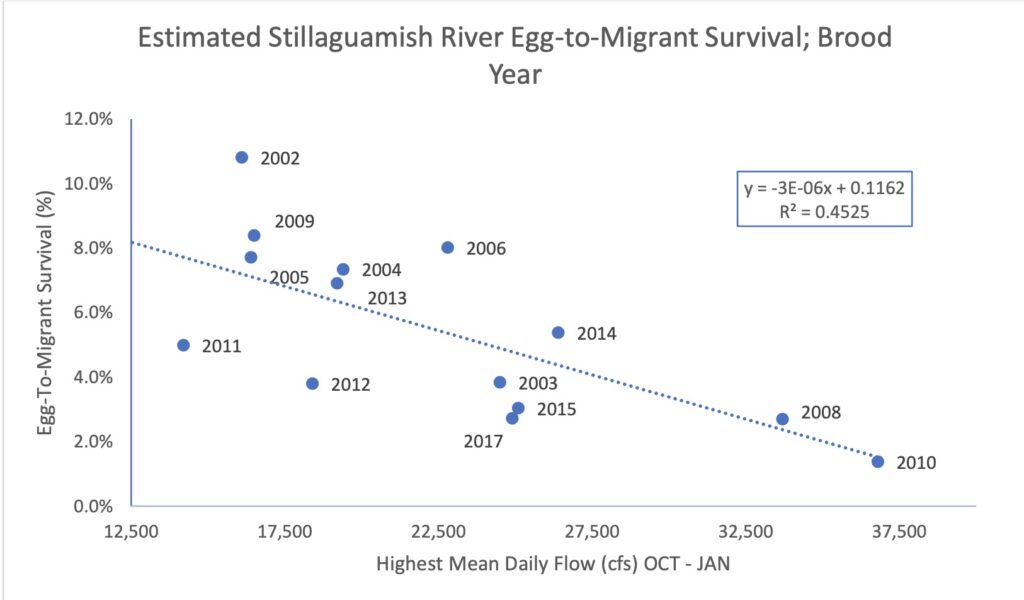
As you can see, higher river flows equate to very low egg-to-migrant survival. In general, we are trending towards drier summers with less snowpack and higher fall rainfall totals, which translates to redd destroying water flows and massive impacts to out-migrating chinook survival.
Habitat recovery is ongoing, but it’s a slow and steady effort to make up for decades of land use without considering impacts on salmon. You can read more about the habitat recovery on the Stillaguamish here.
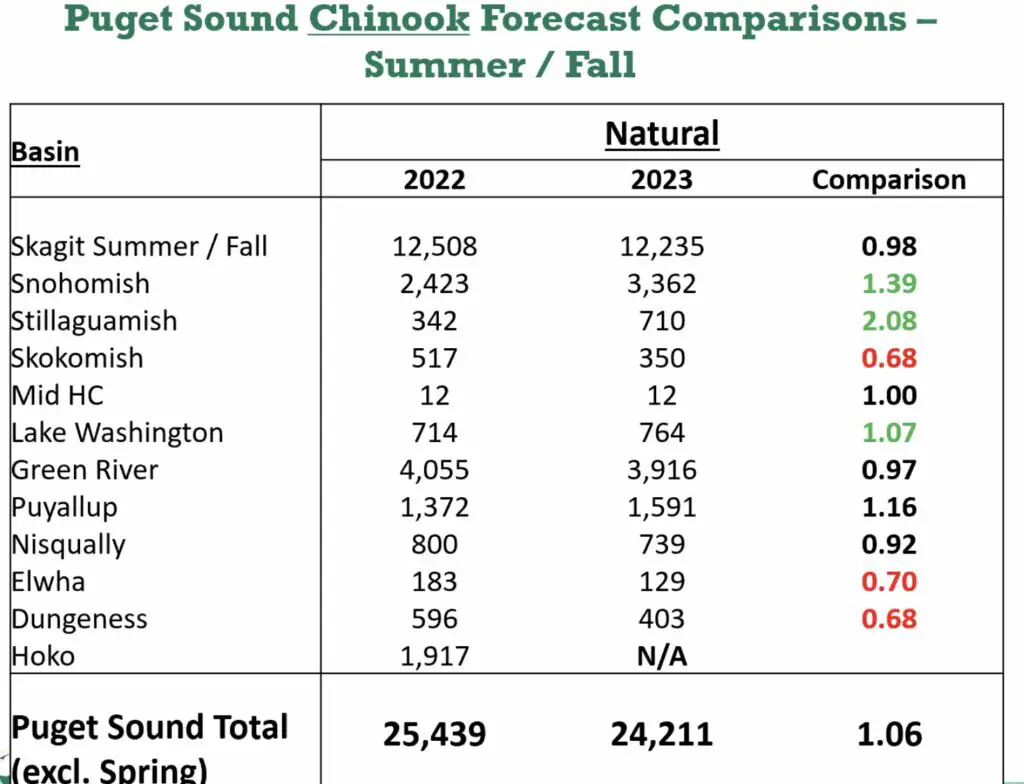
A final note on this topic, more fish spawned in the Stillaguamish in 2022 than expected, and over 2x that original forecast are expected to make it to the spawning grounds in 2023. This is great news, but doesn’t change the allowable impacts that move the needle on salmon seasons until the below thresholds are reached:
A forecasted total run-size of 900-1500 salmon equates to an unmarked exploitation rate of 9% and a marked exploitation rate of 15% and above 1500 that goes to 13% and “no constraint” respectively.
So, a continued positive trajectory here over the next few years could be helpful, but I’m not holding my breath either.
Stillaguamish River Salmon Fishing 2024
The primary salmon fishing opportunity on the Stillaguamish River is for coho salmon, so the automatically updating stats on the hatchery coho run will be displayed below.
Updated status on hatchery coho returning to the Stillaguamish River
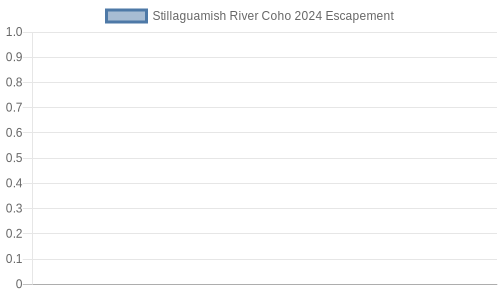
The above graph will update every Thursday typically.
When to fish for fall chinook on the Stillaguamish River?

The Stillaguamish Coho run is typically more reliable to fish in late October near when it typically closes. Any surge of rain will bring lots of fresh fish into the river making it worth some angling effort.
Forecast for 2024 Stillaguamish River Coho
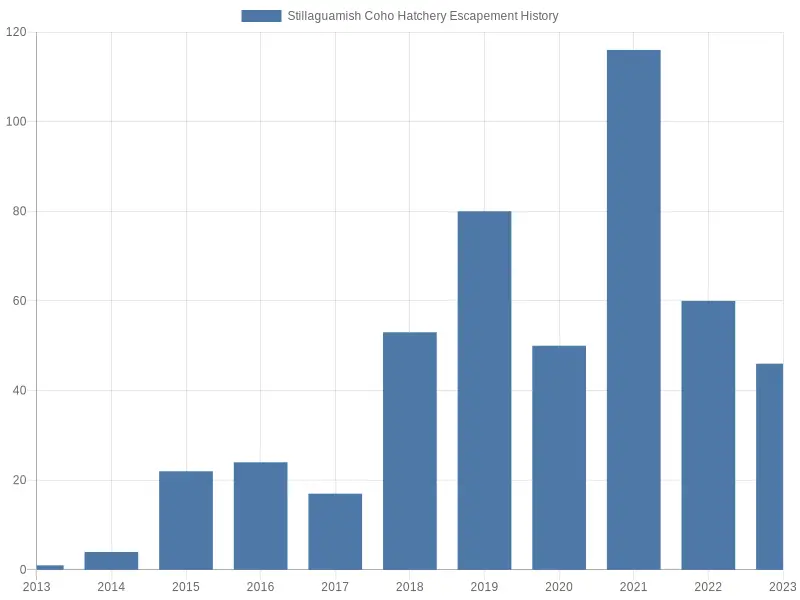
These numbers of hatchery coho are pretty dismal, but you can keep unmarked non-hatchery coho on some years as well making it more worthwhile to fish.
Fishing Regulations on the Stillaguamish River for 2025-2026
| Species | Date | Additional Rules |
mainstem and all sloughs downstream of Marine Drive (south of Stanwood) CRC (876) |
||
All species |
Night closure. |
|
Aug. 1-Nov. 30 |
Anti-snagging rule. Except: Anti-snagging gear restriction does not apply to sturgeon. |
|
Trout |
Year-round |
Statewide min. size/daily limit. Except: cutthroat trout and wild rainbow trout: min. size 14”. |
Other game fish |
Year-round |
Statewide min. size/daily limit. |
Sturgeon |
Year-round |
Night closure. Catch-and-release. Sturgeon gear rules apply. |
from Marine Drive upstream to forks |
||
All species |
Sept. 22-Nov. 30 |
Night closure. Selective gear rules. |
Trout |
Sept. 22-Nov. 30 |
Catch-and-release. |
Dec. 1-Jan. 31 |
Statewide min. size/daily limit. Except: cutthroat trout and wild rainbow trout: min. size 14”. |
|
Steelhead (hatchery) |
Sept. 22-Jan. 31 |
Min. size 20”. Daily limit 2. |
Other game fish |
Sept. 22-Nov. 30 |
Catch-and-release. |
Dec. 1-Jan. 31 |
Statewide min. size/daily limit. |
|
Salmon |
Sept. 22-Nov. 30 |
Min. size 12”. Daily limit 2. Release Chinook, pink, and chum. |
from water control structure/barrier dam (downstream of I-5) downstream 200’ |
||
All species |
CLOSED WATERS. |
|
Please refer to WDFW’s emergency rules page for a full list of rules that are in effect.
It’s your responsibility as the recreational angler to know ALL of these rules, not just what is discussed here on the blog.